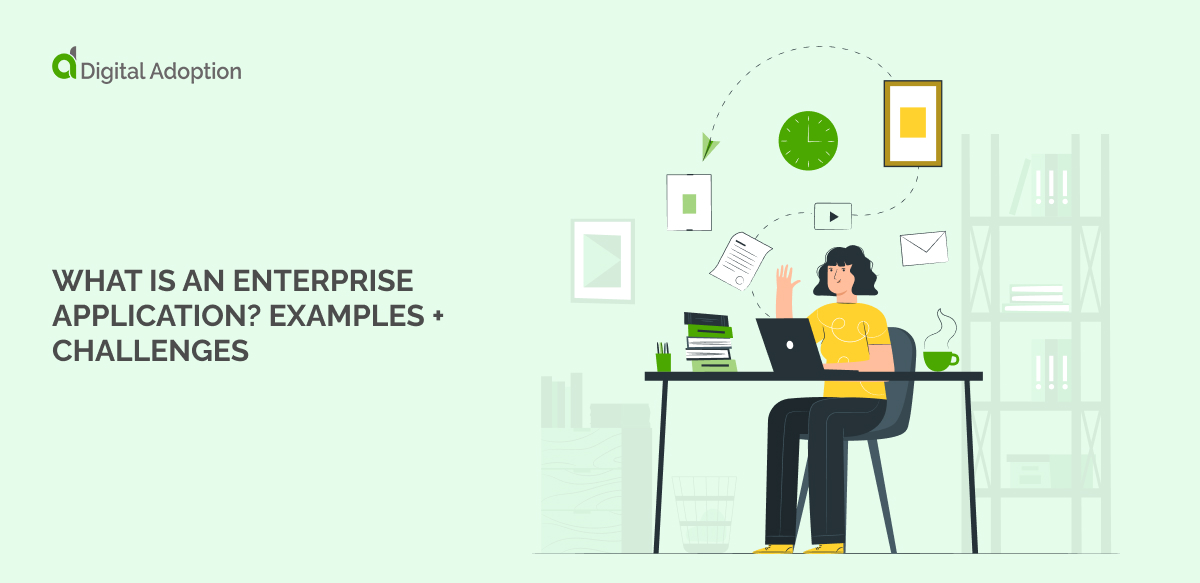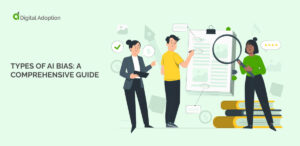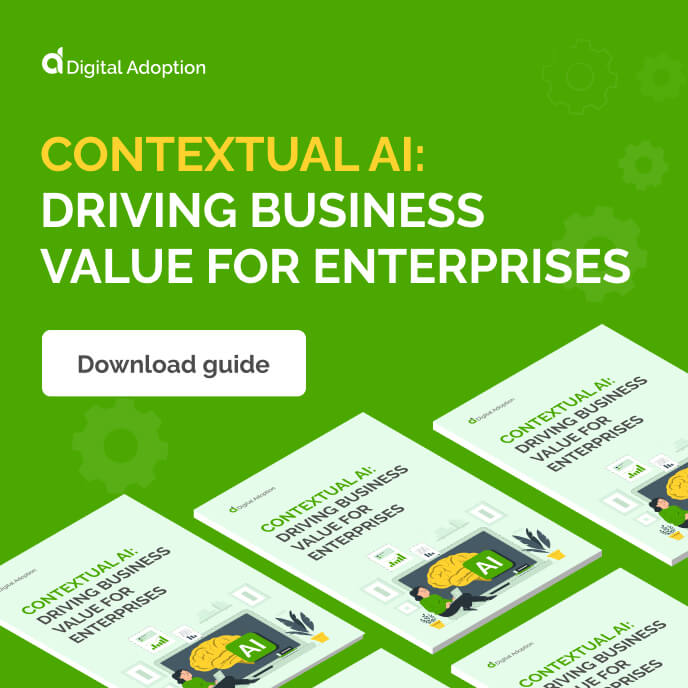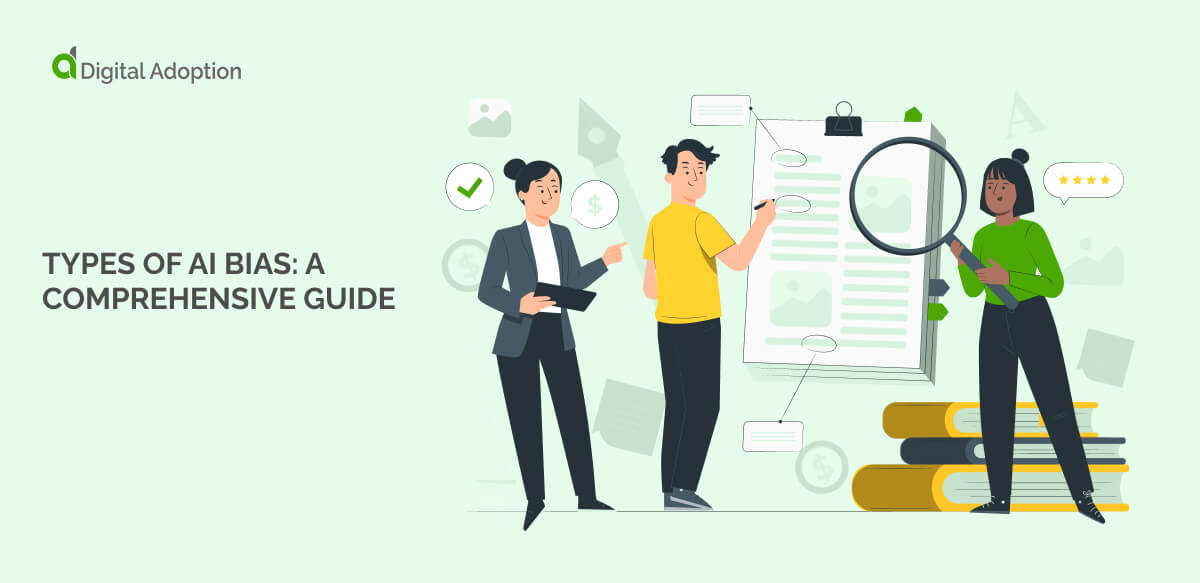Business is changing. Over a third of workers in the United States who can work remotely now do so full-time, according to a 2023 report by the Pew Research Center.
The COVID-19 pandemic changed how we did business. A new generation is reshaping how we see work. It’s pushed operations online. Enterprise applications have become a key tool in helping companies to complete their mission.
These powerful software solutions now perform tasks that used to require hours of human resources. With the advancement of AI and other technologies, they are poised to become even more potent in the future.
New software solutions offer many benefits. But, its effectiveness depends on proper execution. That’s why laying the groundwork is crucial.
- What is an enterprise application?
- What are some types of enterprise applications?
- What are the benefits of an enterprise application?
- What are the challenges of an enterprise application?
- What are the best practices for effective enterprise application implementation?
- Why are enterprise applications essential for business success?
What is an enterprise application?
An enterprise application is a large software system. It is designed to support and integrate many business processes and operations across a whole organization. It enables enterprises to share data, collaborate, automate, and make informed decisions.
What are some types of enterprise applications?
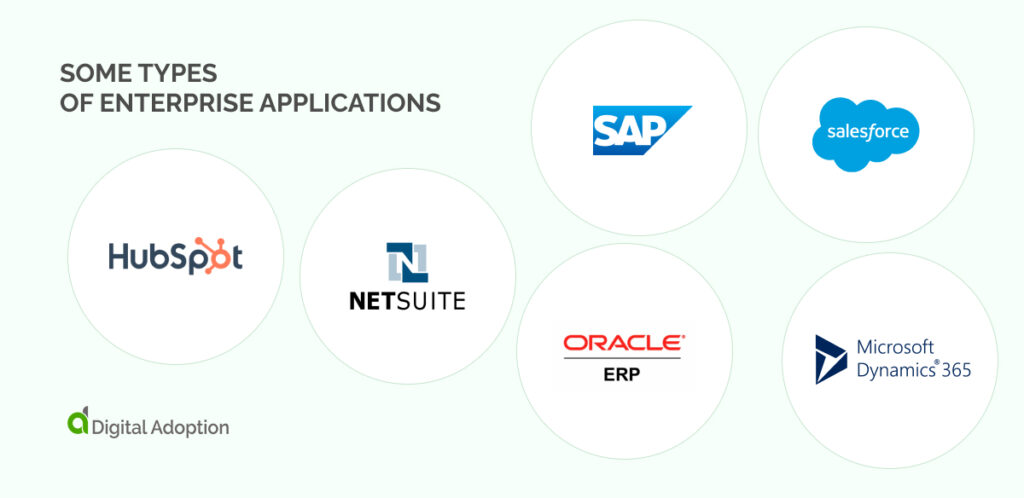
There are many types of these digital tools available. Here are the most commonly used ones that streamline business operations.
Customer relationship management (CRM)
CRM applications are software platforms used to manage and improve interactions with customers. They’re commonly employed across various enterprise departments like sales, marketing, and human resources.
CRM tools offer a 360-degree view of customers, showing their activities, preferences, and interactions. This is true in any department and leads to improved customer service, satisfaction, and higher sales.
Example
- Hubspot
- Pipedrive
- Salesforce
- Freshsales
- Zoho CRM
Supply chain management (SCM)
SCM tools streamline supply chain operations. They offer better visibility and integration across sourcing, procurement, conversion, logistics, etc.
These enterprise applications manage complex production processes, inventory, and manufacturing. They also handle distribution, ensuring smooth operations in the supply chain. SCM tools also facilitate collaboration among supply chain members through intranets and extranets.
Example
- Oracle SCM
- Magaya
- Netsuite
- Epicor
Enterprise resource planning (ERP)
ERP applications manage core business processes. They collect, store, manage, and interpret data from various activities. They provide a central platform to streamline operations and help boost collaboration and efficiency across departments, including manufacturing, purchasing, sales, and accounting.
ERP software improves organizational agility and data security. It standardizes operations, which enhances collaboration and decision-making. ERP software drives growth by enabling businesses to adapt, boost flexibility, and work more cohesively inside and out.
Example
- Acumatica
- Microsoft Dynamics 365
- Netsuite
- SAP Business One
Accounting and billing systems
Accounting and billing systems are vital applications. They manage money transactions within organizations, and they are especially useful for large businesses. They handle cash flow, track expenses, and create detailed financial reports.
These systems streamline processes and reduce errors by automating billing and invoicing.
Example
- FreshBooks
- QuickBooks
- Xero
- Zoho Invoice
Point-of-sale software (POS)
Point-of-sale (POS) software is an application facilitating sales transactions, primarily in retail. It aids in tracking and processing payments, managing inventory, and collecting customer data.
POS systems are integrated with modules like inventory and employee management. They streamline operations and improve customer experiences. They also provide real-time insights and support many payment options, enhancing sales efficiency and reducing errors.
Example
- Shopify
- Lightspeed
- Clover POS
- Square
Business intelligence systems
Business intelligence systems are widely utilized enterprise applications that offer strategic value. They empower organizations to analyze and manage business information efficiently.
They use methods like data mining, analytics, and data visualization. These methods provide insights for informed decisions. In a nutshell, they find opportunities. They give a competitive edge by analyzing large data volumes.
These systems support many decisions, from operational to strategic. They do this by combining external market data with internal company data.
Example
- Microsoft Power BI
- Tableau
- Domo
- Qlik
Human resource (HR) systems
HR Systems are tailored to efficiently manage diverse HR functions within organizations. These enterprise applications serve many purposes. But, they mainly store, process, and report employee information.
They also help with staff scheduling, time off requests, recruitment, and training.
Example
- BambooHR
- Rippling
- Paycor
- ADP
What are the benefits of an enterprise application?
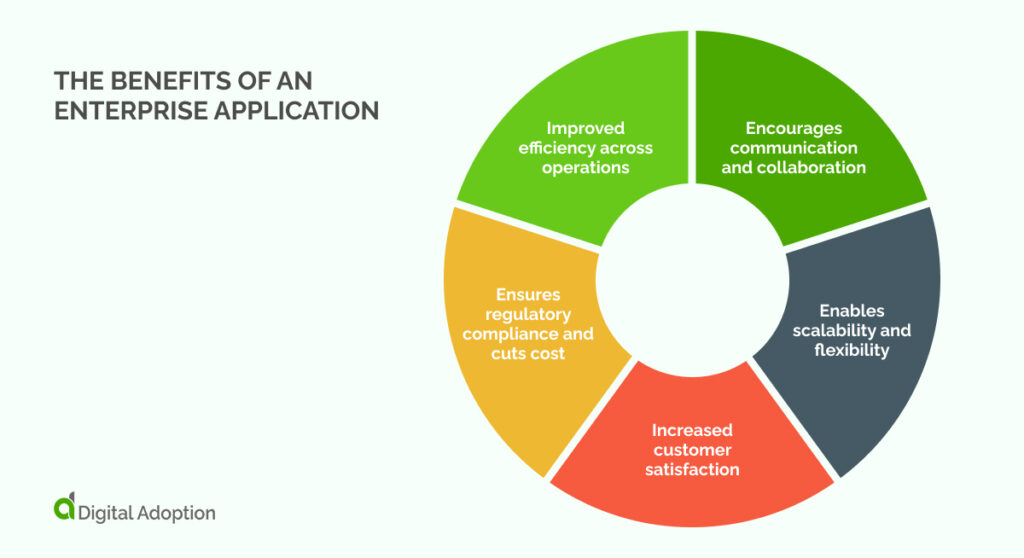
There are many benefits to successfully implementing these solutions. Below are a few of the most prominent.
Improved efficiency across operations
Enterprise applications can improve efficiency in operations across an organization. The tools streamline work and cut mental effort.
Well-designed applications can optimize business processes and make internal systems easier to use. This results in shorter workflows, fewer errors, better sales efficiency, and improved productivity.
Research backs this up. A recent International Data Corporation study found that 51% of organizations plan to keep their current applications, while 46% intend to replace them within three years. The study highlighted generative AI as a key factor in this shift, with AI being used to enhance overall business efficiency.
Encourages communication and collaboration
Effective enterprise software also improves efficiency. It also fosters collaboration and communication in an organization. This is especially advantageous for large hierarchical organizations with separate divisions working independently globally.
This benefit is not to be overlooked. A McKinsey study found that companies utilizing social technologies for employee collaboration could boost productivity by 20-25%.
Enables scalability and flexibility
For an organization to succeed, it must scale with demand. Enterprise applications are vital in making this happen.
They let organizations handle more work without sacrificing speed or user experience. These applications also automate processes, manage data, and enable informed decision-making. The software also ensures flexibility, which is essential in an unpredictable world.
These apps help forecast problems and guide decision-making. They offer real-time insights, facilitate collaboration, and ensure regulatory compliance.
Increased customer satisfaction
A satisfied customer often becomes a returning customer. According to a Salesforce report, 88% of customers say a company’s experience is as important as its products or services.
Enterprise applications, particularly those leveraging mobility solutions, can increase customer satisfaction in several ways. They streamline operations and lead to quicker responses and better customer relationships.
These apps also aid in customer access and offer tailored experiences, which boosts satisfaction. Mobile devices can create custom and interactive customer experiences and provide real-time updates on order status.
Ensures regulatory compliance and cuts cost
Enterprise applications also ensure standardization across all divisions of a business. This is particularly important for maintaining regulatory compliance.
Non-compliance carries hefty financial and security consequences. Digitalizing operations through these applications ensures adherence to regulations and averts costly legal fees.
Enterprise applications can also cut costs for businesses. While adopting new software may require an upfront investment, it will pay dividends in the future.
Nucleus Research reports that for every dollar spent on a new application, companies see an average return of $7.23. New software is invaluable for business, offering long-term financial gains and regulatory adherence.
What are the challenges of an enterprise application?
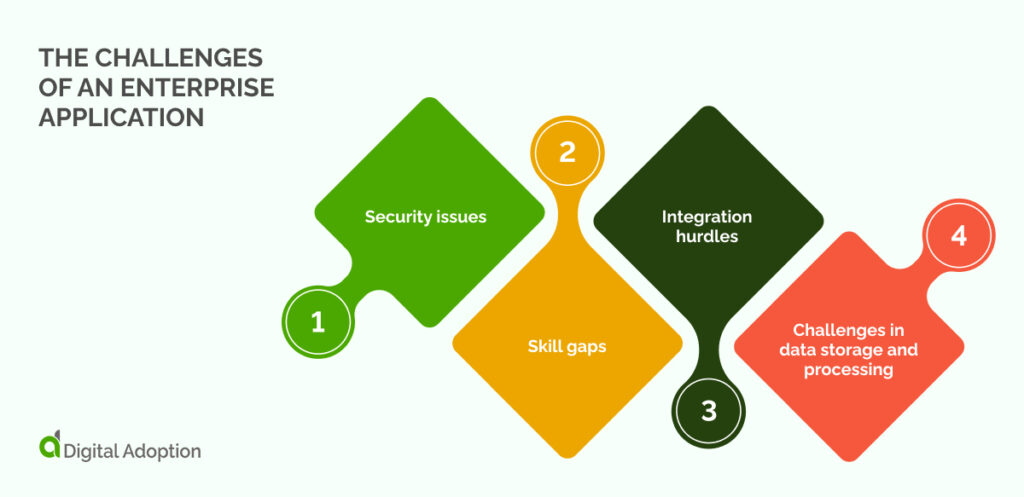
The benefits are clear. But there are also challenges. These are important to consider in enterprise app implementation.
Security issues
As with any digital adoption strategy, using an enterprise application carries security risks. While these risks can be mitigated through effective planning and protection measures, it’s important to remember them.
Forbes reports that breaches can cost businesses a lot. The average cost is around $4.35 million.
Security threats in new software come in many forms. These risks include brute force attacks, injection attacks, and broken access control. These threats can harm data integrity and confidentiality, which can be costly.
Skill gaps
Skill gaps are another challenge to a successful application implementation strategy. Tools are only as effective as the people using them. Adopting a new application becomes less likely if the workforce lacks the needed skills, especially for large deployments.
The issue of skill gaps is widespread. A study by the UK government, which surveyed over 1000 businesses across the country, found that around a quarter of businesses reported insufficient skills.
The US also has skill gaps, which hurt employee engagement, retention, and burnout. A study of over 1,000 US corporate professionals found that 70% of leaders reported critical skill gaps, and 63% of junior-level employees reported experiencing job-related burnout due to these skill gaps.
Integration hurdles
Integration hurdles also present a significant challenge for enterprise application strategies. Organizations often have old legacy systems and third-party applications. That makes it hard to integrate with new systems.
Integration is a common challenge in digital adoption initiatives. Research shows that 70% of digital transformations fall short of their objectives. This process can be costly, particularly if outside talent is required to ensure smooth integration.
Challenges in data storage and processing
Enterprise applications handle lots of data. It comes from various sources across organizations, including structured and unstructured data. Managing this data is hard. This is especially true for unstructured data like emails and documents.
DJ Jones, a Chief Technology Officer at Kerridge Commercial Systems, claims on LinkedIn that 80-90% of enterprise data is unstructured. Processing it accurately in enterprise applications requires a complete strategy.
Organizations may need to invest in scalable storage. This is to handle data growth, which increases the cost of new applications.
What are the best practices for effective enterprise application implementation?
For a new application to be effective, it needs to be implemented well. Below are steps to follow to ensure correct implementation.
Prioritise effective change management
To ensure enterprise applications work well, prioritize change management.
Digital adoption projects, including enterprise applications, often face significant adoption challenges. Thus, team leaders must engage. This is crucial for guiding employees through change during implementation.
Develop a structured approach with a detailed change management plan. It should focus on adoption barriers and skill gaps.
Ensure robust security and data protection
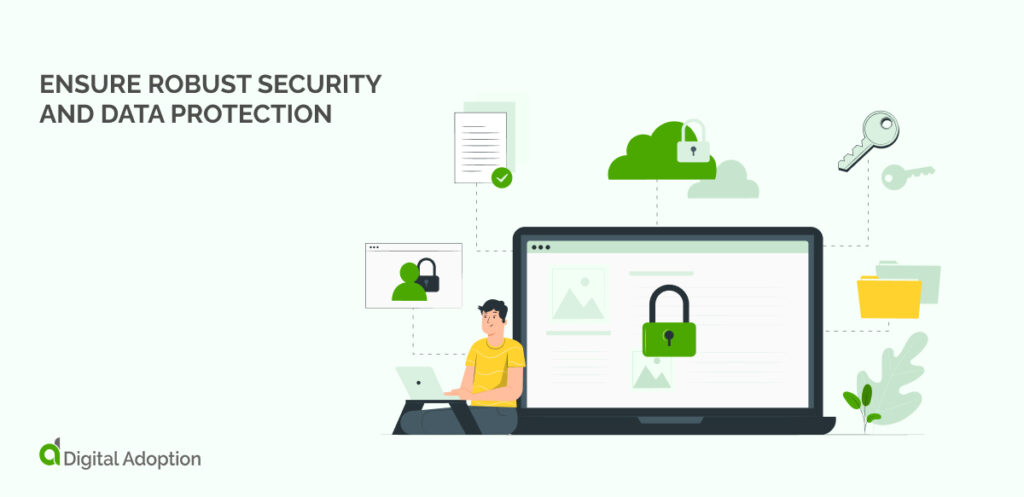
Enterprise applications often store and handle lots of sensitive data. This includes financial information, customer records, and intellectual property.
Implementing strong data security is essential to prevent breaches. They can cause financial losses, legal liabilities, and reputational damage.
To ensure enterprise app implementation goes well, use strict role-based access controls. You should also enforce strong, regularly changed password policies. It’s best to keep all software up-to-date and patch if needed to promptly address vulnerabilities.
Plan with scalability and integration in mind
Organizations should plan for scalability and integration to ensure effective enterprise application implementation.
New software should grow with the business, not fall behind. Ensuring that it can handle growing data is key to maintaining its effectiveness in the future.
Enterprise applications benefit from scalability. However, it is only guaranteed if planned well from the start.
Organizations should choose wisely when picking an application. It should fix current issues and bring future benefits.
Software integration is also crucial. The application should seamlessly integrate with existing third-party and legacy software.
Create remote-friendly and role-based roadmaps
User adoption is another key strategy for successful enterprise application implementation.
Remote work and global teams are on the rise. Enterprise applications must serve users in many places and time zones.
Roadmaps should consider remote work and are crucial for clear communication and alignment. They should foster collaboration and cut misunderstandings across distributed teams.
Comprehensive roadmaps, divided into roles, are also crucial. They ensure all team members understand their objectives and are aligned with the overarching strategy.
Consider consulting with professionals and experts
Hiring experts to consult in the enterprise application implementation process is beneficial. Consultants offer extensive expertise and experience across various industries and domains.
They have deep knowledge of best practices, methods, and potential pitfalls to avoid. This knowledge is invaluable for organizations that lack in-house expertise.
Consultants also offer a fresh, unbiased view. They are not entrenched in an organization’s culture or politics. This outside viewpoint can help find blind spots and challenge assumptions. It offers fresh insights that internal teams may miss.
Feedback loops and continuous improvement
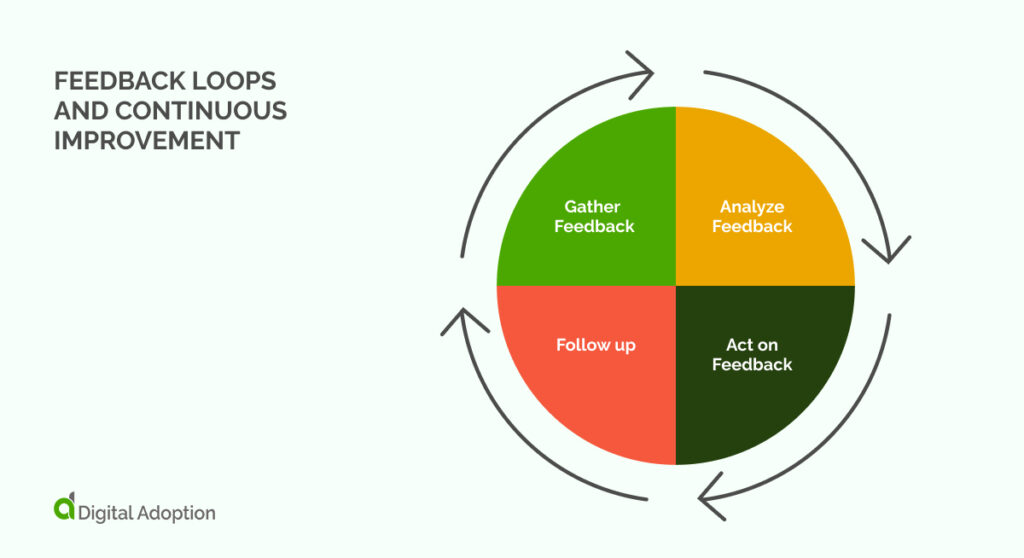
Even if the first rollout of a new application succeeds, you must plan for feedback and improvement. This is key to making sure it lasts.
Implementing an enterprise application is a lengthy and complex process. Feedback loops enable an iterative approach. They allow small improvements based on user feedback rather than striving for a perfect solution all at once. Feedback loops also help organizations to quickly find bottlenecks, pain points, or areas for improvement.
Improvement should always be data-driven. However, employee surveys are also valuable. Through surveys, teams can learn from user experiences and identify areas for upskilling or training.
Why are enterprise applications essential for business success?
Enterprise applications are vital for business success. They streamline operations, boost productivity, and aid decision-making.
This software comes in many forms. But, the success of good implementation hinges on the same principles. It’s not just about the capability of the technology. It’s how it’s used within a business.
They offer many benefits, including enabling automation and higher productivity, increased security, and more. Forbes considers them the “most important infrastructure investments for startups, mid-size companies, and large organizations alike.”
However, to overcome the challenges of these applications, businesses should focus on laying a robust roadmap for their implementation.
How? By focusing on change management, addressing skill gaps, and making wise choices about applications that address current pain points.

